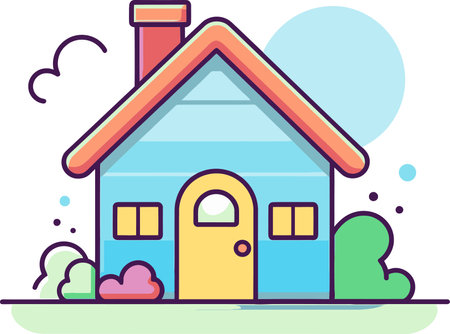1. The Essence of Sustainable Minimalism
Sustainable minimalism is more than just a design trend—its a lifestyle choice that blends beauty with responsibility. At its heart, this approach encourages us to live intentionally, reduce our environmental impact, and create homes that prioritize quality over quantity.
Intentional Living
Intentional living means making conscious choices about what we bring into our homes. Instead of filling spaces with unnecessary items, sustainable minimalism urges us to focus on what truly adds value to our lives. This mindset not only creates cleaner, more peaceful environments but also reduces stress and promotes well-being.
Reducing Environmental Impact
Every item we purchase has an environmental footprint. By choosing fewer, better-quality pieces—especially those made from eco-friendly or recycled materials—we can help conserve resources and reduce waste. Sustainable minimalism supports using locally sourced products, repurposing furniture, and investing in timeless designs that last for years.
Eco-Friendly Material Examples
| Material | Description | Sustainability Benefit |
|---|---|---|
| Bamboo | Fast-growing natural material used in flooring and furniture | Renewable resource with low environmental impact |
| Reclaimed Wood | Wood salvaged from old buildings or furniture | Reduces demand for new lumber and keeps materials out of landfills |
| Recycled Metal | Metal reused from previous products or structures | Lowers energy use compared to producing new metal |
| Cork | Sourced from the bark of cork oak trees without cutting them down | Biodegradable and renewable, with natural insulation properties |
Quality Over Quantity
A key principle of sustainable minimalism is prioritizing long-lasting design. Instead of buying trendy, disposable décor, this philosophy encourages thoughtful investments in items that are well-made and timeless. Fewer, high-quality pieces not only reduce clutter but also save money in the long run by eliminating the need for frequent replacements.
Tips for Choosing Quality Items:
- Look for craftsmanship and durable materials.
- Select neutral tones and classic styles that won’t go out of fashion.
- Avoid mass-produced goods with short life spans.
- Support local artisans and sustainable brands when possible.
Sustainable minimalism allows us to create beautiful interiors that reflect our values—spaces that feel calm, purposeful, and connected to the world around us.
2. Materials That Matter
Choosing the right materials is at the heart of sustainable minimalism. Its not just about how something looks—its also about where it comes from, how its made, and how long it will last. When we select eco-friendly and responsibly sourced materials, were making decisions that benefit both our homes and the planet.
Reclaimed and Recycled Materials
Reclaimed wood, recycled metal, and repurposed glass are all great examples of materials that reduce waste while adding unique character to your space. These materials often carry a story and bring warmth to minimalist interiors without sacrificing style.
Benefits of Reclaimed Wood
- Eco-friendly: Reduces demand for virgin lumber.
- Durable: Old-growth wood is often denser and stronger.
- Unique aesthetic: Natural weathering adds charm and texture.
Low-VOC Paints and Finishes
Volatile Organic Compounds (VOCs) are chemicals found in many traditional paints and finishes that can harm indoor air quality. Choosing low-VOC or zero-VOC options helps create a healthier home environment, especially important in enclosed minimalist spaces where air circulation may be limited.
Why Low-VOC Matters
- Healthier indoor air: Reduces exposure to harmful toxins.
- Better for the planet: Lower environmental impact during production and use.
- No compromise on color or finish: Available in a wide range of modern hues.
Sustainable Material Comparison
| Material | Sustainability Benefit | Common Uses |
|---|---|---|
| Reclaimed Wood | Reduces logging and landfill waste | Flooring, furniture, wall accents |
| Bamboo | Rapidly renewable resource | Counters, flooring, textiles |
| Cork | Harvested without harming trees | Flooring, wall panels |
| Recycled Metal | Lowers energy use compared to new metal production | Fixtures, furniture frames |
| Low-VOC Paints | Improves indoor air quality | Walls, ceilings, cabinetry |
A Thoughtful Approach to Longevity
Sustainable minimalism isnt just about using green materials—its about choosing items that are built to last. By investing in high-quality pieces made from enduring materials, youre reducing the need for replacements and minimizing waste over time. Look for brands that prioritize durability, ethical sourcing, and transparent manufacturing practices.
Your Sustainable Checklist:
- Select natural or recycled materials when possible.
- Avoid synthetic finishes with high chemical content.
- Look for certifications like FSC (Forest Stewardship Council) or GREENGUARD.
- Support local artisans or companies with transparent supply chains.
Sustainable minimalism starts with thoughtful material choices. Whether youre painting a room or furnishing an entire home, every decision can contribute to a more responsible and beautiful living space.

3. Form Meets Function
In sustainable minimalism, beauty isnt just about looks—its also about how well your space works for you. A clutter-free, functional interior can be both stylish and smart when you make intentional design choices that serve multiple purposes. The goal is to create living areas that adapt to your needs without unnecessary excess.
Smart Furnishing Choices
Choosing furniture with built-in storage or multi-use features is key in a minimalist home. This helps reduce clutter while keeping your essentials organized and accessible. Look for pieces that serve more than one purpose, especially in smaller spaces like apartments or studios.
| Furniture Piece | Primary Use | Secondary Function |
|---|---|---|
| Sofa Bed | Sitting Area | Guest Bed |
| Storage Ottoman | Footrest/Seating | Hidden Storage |
| Wall-Mounted Desk | Workstation | Folds Away for Space Saving |
| Expandable Dining Table | Everyday Meals | Hosting Larger Gatherings |
Flexible Layouts That Work With You
A flexible layout allows you to change the function of a room as your lifestyle evolves. For example, an open-plan living area can shift from a cozy reading nook during the day to an entertaining space at night. Use lightweight or modular furniture that’s easy to move and reconfigure when needed.
Tips for Creating a Flexible Layout:
- Use area rugs: Define different zones within the same room without building walls.
- Add movable dividers: Create temporary separation between work and relaxation areas.
- Select lightweight furniture: Makes rearranging easier when your needs change.
- Choose neutral tones: Helps maintain visual harmony even as functions shift.
No Compromise on Style
You don’t have to sacrifice aesthetics for practicality. Minimalist design celebrates clean lines, quality materials, and thoughtful details. Choose timeless pieces in natural materials like wood, linen, or metal that align with both your taste and sustainability goals. The result? A home that feels calm, intentional, and uniquely yours—all while being kind to the planet.
4. Mindful Aesthetics
Sustainable minimalism isnt just about reducing clutter—its also about creating a space that feels calm, intentional, and personal. The key to achieving this warm and inviting atmosphere lies in thoughtful design choices that balance simplicity with comfort.
Natural Textures Bring Life
Incorporating natural textures into your interior design adds depth and warmth to minimalist spaces. Think woven baskets, linen curtains, reclaimed wood furniture, or jute rugs. These materials not only support sustainability but also create a sense of connection to nature.
Neutral Palettes That Soothe
A neutral color scheme is a cornerstone of minimalist design. However, it doesn’t have to feel cold or sterile. Soft whites, warm beiges, earthy browns, and muted grays can make a room feel cozy and grounded. Layering different shades within the same palette adds subtle interest without overwhelming the senses.
Common Neutral Shades and Their Mood Effects
| Color | Effect on Mood | Best Used In |
|---|---|---|
| Warm White | Creates a clean yet cozy vibe | Living rooms, kitchens |
| Beige | Adds warmth and comfort | Bedrooms, dining areas |
| Soft Gray | Brings calmness and neutrality | Offices, bathrooms |
| Earthy Brown | Grounds the space with natural tones | Entryways, lounges |
Curated Personal Touches
A mindful minimalist home still reflects your personality—it just does so intentionally. Instead of filling shelves with knick-knacks, choose a few meaningful items: a framed family photo, a handmade ceramic vase, or a vintage book. These curated touches tell your story while keeping visual noise to a minimum.
Tips for Adding Personal Elements:
- Select quality over quantity: Choose fewer pieces that hold real meaning or function.
- Create focal points: Let one or two statement items shine in each room.
- Edit regularly: Reassess what you display every season to keep it fresh and intentional.
By blending natural elements, soft color palettes, and personalized details, sustainable minimalism becomes more than just a style—it becomes a way to live beautifully and responsibly.
5. Sustainable Living Through Design
Creating a beautiful home doesn’t have to come at the expense of the environment. In fact, sustainable interior design can help reduce your carbon footprint while still allowing you to enjoy a stylish and functional space. By making smart choices in materials, layout, and everyday habits, you can turn your home into a hub for sustainable living.
Energy-Efficient Design Choices
One of the easiest ways to make your home more sustainable is by focusing on energy efficiency. From lighting to insulation, small changes can make a big difference.
| Design Element | Sustainable Option | Benefit |
|---|---|---|
| Lighting | LED bulbs and smart lighting systems | Lowers electricity usage and lasts longer |
| Windows | Double-pane or energy-efficient windows | Improves insulation and reduces heating/cooling costs |
| Appliances | ENERGY STAR-certified appliances | Reduces water and power consumption |
Reducing Waste in Home Design
Sustainable minimalism encourages us to buy less and use what we already have. When it comes to decorating or remodeling, this means choosing durable, timeless pieces and avoiding fast furniture that ends up in landfills.
- Repurpose: Give old furniture new life with paint or reupholstery.
- Select quality over quantity: Invest in well-made items that will last for years.
- Avoid trends: Choose classic designs that wont go out of style quickly.
Encouraging Conscious Consumer Behavior
Your home should reflect mindful living. Every purchase you make has an impact — not just on your wallet, but also on the planet. Being intentional about what enters your space helps reduce clutter and waste.
Tips for Conscious Decorating
- Buy local: Support local artisans and reduce transportation emissions.
- Select eco-friendly materials: Look for items made from recycled or renewable resources like bamboo, cork, or reclaimed wood.
- Create multipurpose spaces: Designing rooms with flexible uses means fewer renovations down the road.
The Bottom Line
Sustainable interior design isnt about sacrificing comfort or beauty—its about making thoughtful decisions that benefit both your lifestyle and the environment. By embracing energy-efficient features, reducing waste, and shopping mindfully, you’re not just creating a stylish home—you’re building a better future.

